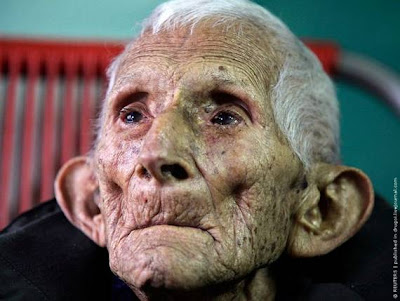Habits are mighty. They have the ability to make or break us. It
seems as if bad habits are the easiest to create, yet the hardest to
cease. Good habits however, take a lifetime to build.
More often than not people habitually conduct themselves in a manner
that does nothing but sabotage their state of wellbeing. As if physical
and mental discontent were highly sought after conditions, these people
work at being stuck in a rut of self-imposed limitations and a lack of
interest in their state of physical and mental health.
Most of us are familiar with the myriad of agendas and self-help
books that target those in desperate need for a change. From the classic
12-Step programs to seemingly easy-way-out titles such as,
Think Yourself Thin,
Americans have plenty of choices to find ways that will help them make
positive changes. The problem is, very few follow through, and less will
actually succeed.
Stephen Covey, author of the famed book, "
Seven Habits of Highly Effective People,"
sold millions of copies that spelled out his methods to find success.
Perhaps the alluring word that put it on the bestseller list is 'habit.'
A habit is an acquired behavior pattern regularly followed until it
has become almost involuntary. We all love to aspire to practicing good
habits, yet it is much easier to recognize and identify with the bad
ones.
Inspired by Covey's practical application of his seven very specific habits
for effectiveness, the following is a closely matched yet contrasting
list of the sevn habits of highly unhealthy people. Call it reverse
psychology or my own clever way to catch your attention; I want you to
understand that habits like these are meant to be broken.
If you identify with at least one of these habits, find out how you,
or someone you care for, can break it and adopt a healthier lifestyle.
Habit 1: Be Inactive
Sitting is a silent killer. A large number of studies show that
living a sedentary lifestyle promotes deadly diseases such as
cardiovascular disease, diabetes, obesity, and even some cancers.
According to Dr. David Coven, a cardiologist with St Luke's-Roosevelt
Hospital Center in New York, the workplace environment is one of the main contributors to dying an early death. But, your desk job is not just to blame. What you do outside the office will also make a difference.
The key is to understand that exercise can be done anywhere and at
any time, and certainly doesn't need to be extreme to yield life-saving
results. Find something you love to do, be it playing a game of
Ping-Pong or chasing your grandkids around the yard. You will be amazed
at the difference it will make in your overall fitness, not to mention
your life expectancy.
Habit 2: Begin With No Friend in Mind
Social interaction is key in maintaining mental health. For some,
reclusive tendencies take over, and our days spent in relative isolation
can turn to weeks, months, or even years. Spending time alone is
generally healthy, but when you wake up and realize you have no friends
to call on, depression can threaten your mental health.
Whether you are trying to make a change in your diet, exercise
regime, or general attitude about life, try and avoid doing it alone.
The support you will gain from a confidant will be worth the initial
pain you feel from letting go of your old habits.
Habit 3: Put Fast Foods First
Fast food is not only fast; it's also very cheap. The lure of a quick
meal while you're on the run is certainly appealing, but over time
indulging in fast food or convenience store spreads will cause serious
damage to your health.
Not having enough time or money is no excuse to eat poorly. Try
planning ahead and learn how cooking at home can save you a ton of cash.
When you do cook meals at home, try resisting a second helping.
Instead, pack it for lunch. What you don't eat for dinner the night
before will make a meal the next day, plus help to reduce overeating,
and your food bill.
Habit 4: Think Slim Wins
Attention dieters: the goal is not to be skinny; the goal is to be
healthy. To do what it takes to adhere to an ideal image based on the
media is to not pay any attention to your own body's intrinsic needs.
Ignore your nutritional needs, and you might find yourself sick, tired,
and without energy.
Resist the temptation to compare yourself with others. Ask yourself
if you are strong, healthy, and fit. If so, why squelch your happiness
just so you can fit into your teenage daughter's jeans? It is just not
worth it.
Habit 5: Seek First to Overestimate, Then Be Underwhelmed
Marketing companies love people who do not do their research before
buying their products, because if they did, they wouldn't be spending
their hard earned dollars on something that is not likely to be a
success. Fad diets that claim miracles won't change your lifestyle
habits; they only put them temporarily on hold. When the excitement of
hope fades, so does all ambition.
Try and not overestimate the promises fads and trends assert. Read
books that spell out the facts. Get educated so you can make wiser
choices, and not give up because you are underwhelmed by the lack of
results.
Habit 6: Supersize
Eating healthy doesn't mean you never get to enjoy decadent
pleasures. It is not a crime to taste, sample, and savor something. What
doesn't work is to overindulge your senses until you've made yourself
sick.
Whether it's drinking too much alcohol, binging on copious amounts of
pure junk food, or participating in some other type of unhealthy
behavioral habits, remember that moderation is the key.
Habit 7: Don't Sharpen the Saw
A sharp mind is the best tool you can use against ill health.
Mindless activities such as watching television deaden neural activity
in the brain. When your neural activity is compromised, you lose your
ability to think clearly. When you lose your ability to think clearly
you make poor decisions. When you make poor decisions, you become
depressed. Why go down that road?
Engaging in creative activities that sharpen the tools of your mind
such as drawing, listening to music, or writing will do just the
opposite. Do what you can to stimulate your mind. Think outside the box
and look at life through a refreshed set of eyes. When you are letting
your creative juices flow, you will feel better about yourself. And when
you feel better about yourself, you will make healthier choices, not to
mention develop superior health habits that will last a lifetime.






































